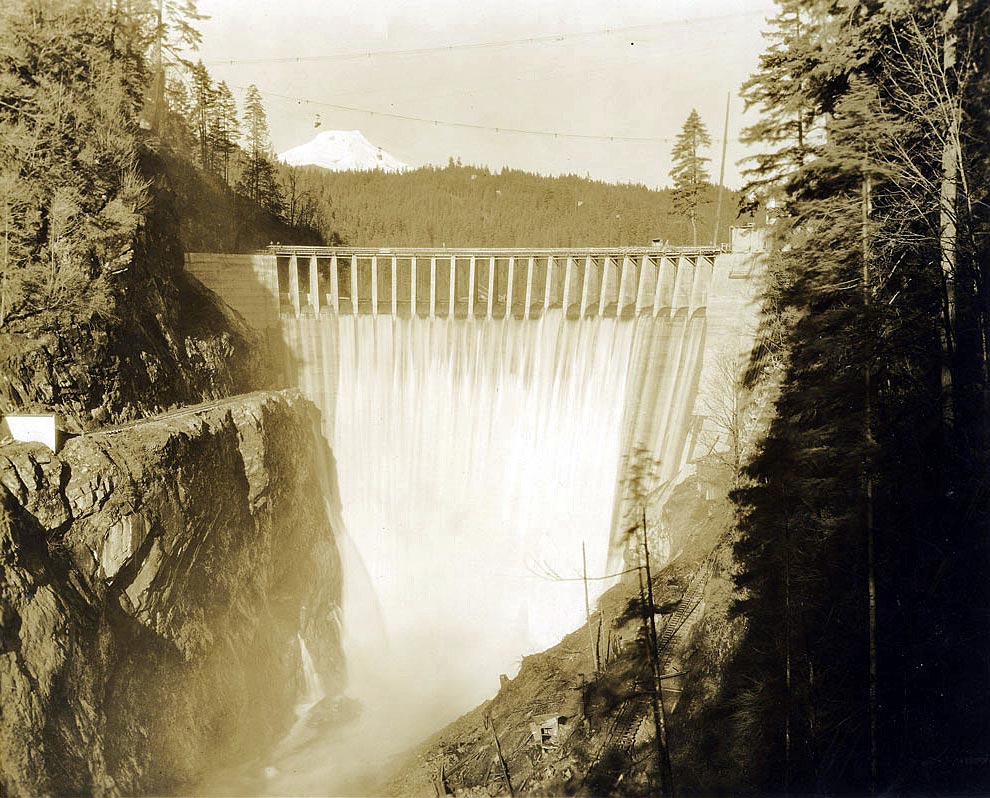A Dam Good Fish Story
A dam presents an obvious obstacle to migrating fish. Dams have the biggest disrupting force on anadromous fish, like salmon or shad, which spawn in rivers but spend most of their adult lives in the ocean, and catadromous ones, like eel, which live in freshwater but swim into the ocean to breed.

Early hydropower developers were notoriously insensitive to environmental issues. That was not the case when the Baker River in Washington State first was dammed in 1924-25. The Baker River was the only stream in Washington State in which sockeye salmon spawned. It was critical to the Pacific Northwest’s fishing industry, to the livelihood of Native American tribes living in the area, and to nature’s ecological balance more generally that the Baker Dam allow passage for adult salmon migrating upstream to spawn and for salmon fry heading downstream toward the ocean.
The dam’s 293-foot height presented a conundrum previously not encountered. Fish never had been lifted over an obstruction more than 50 feet high. Project managers consulted with state and federal fisheries officials, area Native American tribes, and renowned marine biologists and university researchers. A committee was formed to address the various issues involved. After a number of meetings and careful consideration, a unique and highly innovative lift system was devised.

The lift system incorporated a forebay downstream of the dam adjacent to the tailwaters of the powerhouse, where salmon were corralled and confined into a fish ladder with 2-foot falls. The fish ladder was designed so that the fish could move upwards from one pool to the next but could not return. The 2-foot elevation between pools was chosen so that the fish could conserve strength between jumps. The fish ladder reached upward to a staging area partway up the height of the dam. There, the fish entered a water-filled car and were transported on an incline railway the rest of the way to the top. In addition, one of the dam’s spillway gates was left open during the June run of fry to the ocean. The danger that fry would encounter passing over the dam on their way downstream was mitigated by designing the dam spillway with a special apron at its base to spread the fall of the water and smooth the transition to the river downstream. It also was discovered that most fry that happened to enter the powerhouse water intake tunnel were able to pass through the powerhouse turbines unharmed.
The success of the Baker fish transport system was lauded as a major advance and studied by the fish management community and power plant engineers in all parts of the world. The Journal of Electricity reported that:
The success of the whole enterprise means a great deal to both the salmon and the power industry of not only this state but of the whole country, fisheries experts have declared. This is the first time so far as is known that the migratory fish have been successfully transported over a high dam. It is predicted that no longer will the power companies be restrained from building as high a dam as is needed across any of our salmon streams and no longer will the great salmon industry of the state be menaced as a result of such power dams.
Journal of Electricity, Vol. 57, No. 6, September 15, 1926, p. 197.
The Baker Dam fish passage system has been improved in significant ways over the years, especially to enhance downstream fish passage. The National Marine Fisheries Service now points to it as an example of successful fish passage improvements.
With hydropower seeing a resurgence in attention in today’s world of climate change, dam operators are recognizing the importance of fish passage. They understand that each situation is unique and that solutions can be worked out by taking into consideration the nature of the river and the habits of the fish running in it. They are devising myriad novel fish passage enhancements tailored to specific dams.
Robert L. Underwood
February 25, 2023
